What is Broadband?
Broadband is a fast, reliable connection to the internet. It’s a term for any high-speed internet access that is “always on”.
Bandwidth, Speed, and Latency
Bandwidth is the amount of data that can be transmitted at one time. Bandwidth refers to the speed of internet service, measured in bits per second.
Speed is conveyed as two numbers; download speed/upload speed. In 2015, the FCC defined broadband as at least 25/3mbps. This is now thought to be insufficient for remote work/learning.
Latency is a time delay or how long it takes data to travel between the sender and the receiver.

Broadband Infrastructure
Fiber is a flexible hair-thin glass or plastic strand that transmits large amounts of data quickly as pulses or waves of light.
An ISP or Internet Service Provider is a company that provides homes or businesses with a connection to the internet. ISPs use various technologies (Ways to Connect) to bring internet access to their customers.
From the internet backbone to the last mile
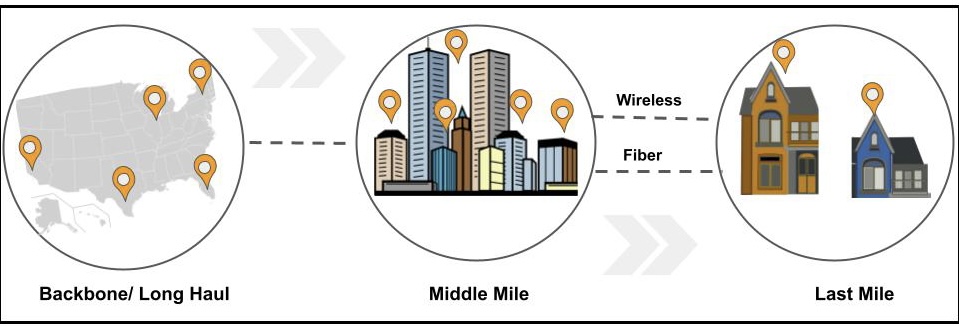
Backbone/Long Haul is simply defined as the core of the Internet. It is the largest and fastest networks all linked together to provide the foundation for ISPs.
Middle Mile is the network of high-speed fiber or fixed wireless that brings broadband close enough to a residence or business so an ISP can provide access.
Last Mile is the technology and process of connecting the end customer’s home or business to the ISP.
Ways to Connect – Technology and Speed
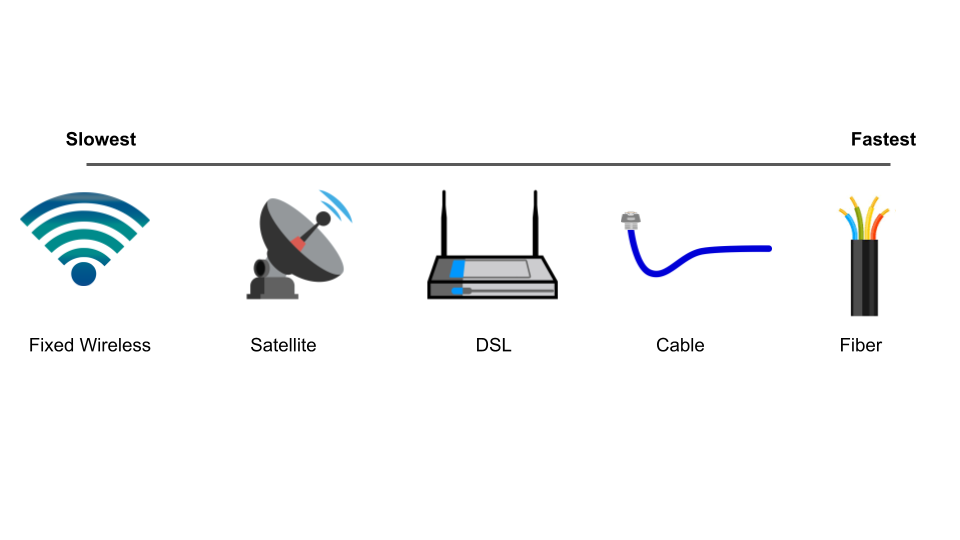
Please see below for an explanation of Technology Types Commonly Used including Landline, DSL, Cable, Fiber, Fixed Wireless, Mobile Wireless, and Satellite.
Technology types commonly used
Fiber-to-the-Home/Premises (FTTP): FTTP is a means to provide communications service by connecting a business or residence to the switch entirety by an optical fiber from an optical network interface at the point of entry at a residence or business. The optical fiber replaces the existing copper telephone line to a residence. As with cable internet, FTTP requires the provider to replace or bypass the existing copper telephone facility. Currently, FTTP service provides much faster connection speeds than DSL or cable internet service.
Cable Internet: Cable internet service uses the hybrid fiber and coaxial cable frequently deployed by cable tv companies to provide television service. Cable provides continuous access to an ISP. Cable requires the provider to replace or bypass the existing copper telephone facility with a second wireline network. A cable modem Is required with this technology choice.
Digital Subscriber Line (DSL): DSL transmits digital IP (Internet Protocol)-formatted messages over standard telephone lines. The DSL service can be used simultaneously with the voice telephone service over the same telephone access line. A DSL modem is required to access the DSL signal. DSL provides continuous access to an ISP.
Satellite Internet Service: Satellite-based communications services offer an attractive telecommunications alternative for individuals located in remote areas. Subscriptions to satellite services are generally driven by the demand for television service in rural areas that lack a cable tv provider. This technology is affected more than the others by adverse weather and network congestion. Traditional satellite internet access can have significant monthly data limits and suffers from high latency. High latency diminishes the utility of interactive online gaming, live videoconferencing, and remote-control device applications. Several low-orbit satellite services are online and may be offered widely in the future. These services have higher speeds and lower latency than previous satellite technology.
Fixed Wireless: Fixed wireless connects a subscriber’s home or business to a serving antenna by radio link. In the past, fixed wireless has been popular in rural areas because it can be installed without incurring the cost of a wireline network. The frequencies for fixed wireless are generally limited to line of sight. The coverage area can also be limited depending upon whether the broadcast spectrum in use is licensed or not (unlicensed fixed wireless must operate at lower power levels than licensed spectrum). Transmission speed for fixed (and mobile) wireless also depends upon the transmission technology.
- Third generation (3G) WiMAX provides an IP-formatted signal with a download speed of up to 6mbps while fourth generation (4G) LTE (Long-Term Evolution) provides a similar IP-formatted signal with a download speed of up to 300mbps. The Introduction of wireless 5G service began in 2017.
Mobile Wireless: A variety of mobile wireless carriers offer Internet access using the 3G, 4G and 5G LTE transmission technologies. In rural areas, antennas are located to facilitate communication while traveling along roads. Some locations away from major roads in the northern portion of the state lack access to a mobile wireless signal. Mobile wireless internet service can have significant monthly data limits.
Landline Switched-Access Service: Internet access is still offered over the traditional analog landline facilities. Dial-up access to an ISP uses the voice portion of the telephone access line, preventing simultaneous or dual-use of the line. This technology provides a low-speed data rate that is increasingly disfavored for internet communications and does not meet the definition of broadband.
Internet for All
- Unserved (per FCC) denotes a home/ business that does not have access 25/3mbps or higher.
- Underserved (per FCC) denotes a home/business that does not have access to 25/3mbps to 100/20mbps or higher.
- Digital equity can be achieved when all members of a community have equal access and sufficient digital literacy to use communications technologies.
- Digital divide refers to the gap between those who have access to digital technology and those who do not. These technologies include smartphones, computers, and the internet. The gap is a result of economic, educational, and/ or social inequalities between those who have computers and online access and those who do not.
- Covered Populations refers to “identity groups and communities disproportionally impacted by digital inequity” (NTIA). These groups have been defined by the Digital Equity Act of 2021 as:
- Individuals living in households with incomes not exceeding 150 percent of the poverty level
- Persons who are 60 years of age or older
- Incarcerated individuals
- Veterans
- Persons with disabilities
- Members of a racial or ethnic minority group
- Individuals with a language barrier, including those who are English learners or have low literacy levels
- Rural inhabitants.
Organization Acronyms/Funding
- NTIA: National Telecommunications and Information Administration
- FCC: Federal Communications Commission
- PSC: Public Service Commission of Wisconsin
- RDOF: Rural Digital Opportunity Fund
- ARPA: American Rescue Plan Act
- BEAD: Broadband Equity Access and Deployment Program
- CAN: Community Area Network
- RFI: Request for Information


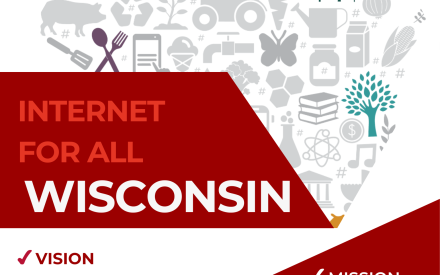







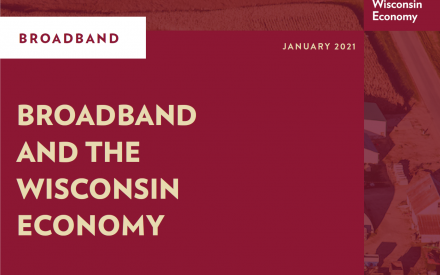 Broadband and the Wisconsin Economy
Broadband and the Wisconsin Economy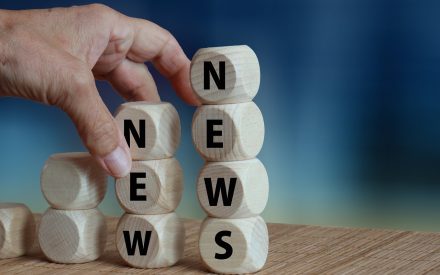 What's Next in Wisconsin Broadband, May 2025
What's Next in Wisconsin Broadband, May 2025 Broadband Expansion in Wisconsin: Case Studies
Broadband Expansion in Wisconsin: Case Studies


